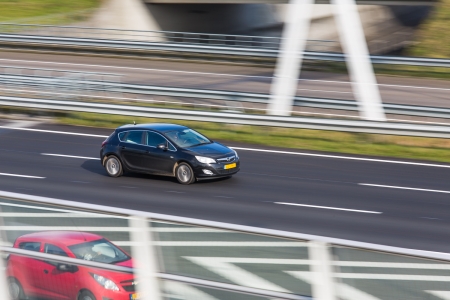Intelligent speed assistance (ISA) leads to lower driving speeds and, therefore, to fewer crashes and casualties (see the question How great is the effect of speed on road safety?). ISA compares driving speed to the local speed limit. Subsequently, the system provides feedback to the driver (informing/warning) or makes speeding physically impossible (intervening).
There is no doubt that ISA can improve road safety. Yet, the effect of ISA on the number of crashes does mainly depend on:
- The ISA type: an intervening variant is considerably more effective than an advisory variant.
- Penetration rate: the more vehicles are equipped with ISA, the greater the effect will be.
- Present speed behaviour: the more frequent and the more serious speeding offences are, the greater the effect of ISA will be.
On the basis of research in the UK [38], it is estimated that full implementation of an intervening ISA will eventually result in a 30% reduction of the number of fatal crashes and a 25% reduction of the number of serious injury crashes. However, estimates of the effect of ISA on the number of crashes greatly differ, as is shown in Table 4. The differences are related to the estimation method used (simulator study or field study; calculated on the basis of the statistical connection between speed and crashes or on the basis of characteristics of actual crashes) and on the included crash types (all crashes or certain crash types – see [39]).
|
ISA type |
Crash type |
Studie |
||||
|
|
|
ESVC (UK) |
LAVIA (F) |
ISA-UK (UK) |
TAC SafeCar (AUS) |
Doecke & Wooley (AUS) |
|
Informing |
Fatal |
18-24% |
4-7% |
|
|
11% |
|
Serious |
14-18% |
0-3% |
|
|
8.3% |
|
|
Warning |
Fatal |
19-32% |
3-17% |
21% |
9% |
18.4% |
|
Serious |
15-25% |
1-11% |
|
7% |
15.6% |
|
|
Intervening |
Fatal |
37-59% |
8-16% |
46% |
|
28.3% |
|
Serious |
29-48% |
0-9% |
|
|
26.5% |
|
ISA also leads to more homogeneous speeds, which, apart from a positive effect on traffic flow, also benefit road safety (see the question How do speed differences affect road safety?). In the late nineties, an ISA pilot in the Dutch city of Tilburg showed the standard speed deviation on 30km/h roads to decrease by 3.5 km/h (from 10.0 to 6.6 km/h) and on 50km/h roads by 2.8 km/h (from 13.4 to 10.6).
Some people are worried that ISA may incline users to drive at the exactly indicated speed and that they will less often adapt their speed to the actual conditions that may demand a speed below the limit (bad weather, heavy traffic). Others are also worried that the mostly lower speed of ISA controlled cars may annoy other drivers, leading to hazardous and undesirable behaviour, such as overtaking, tailgating and road rage. Such implications cannot be ruled out, but, as yet, there is no clear scientific evidence that they actually occur. And even if they do occur for some drivers and in some circumstances, ISA will still have a positive net effect on road safety, as the many ISA evaluation studies show (see for example Table 4).
Almost all studies find ISA to have a positive effect on fuel consumption and emissions, but they differ in the extent of the effect [39].
